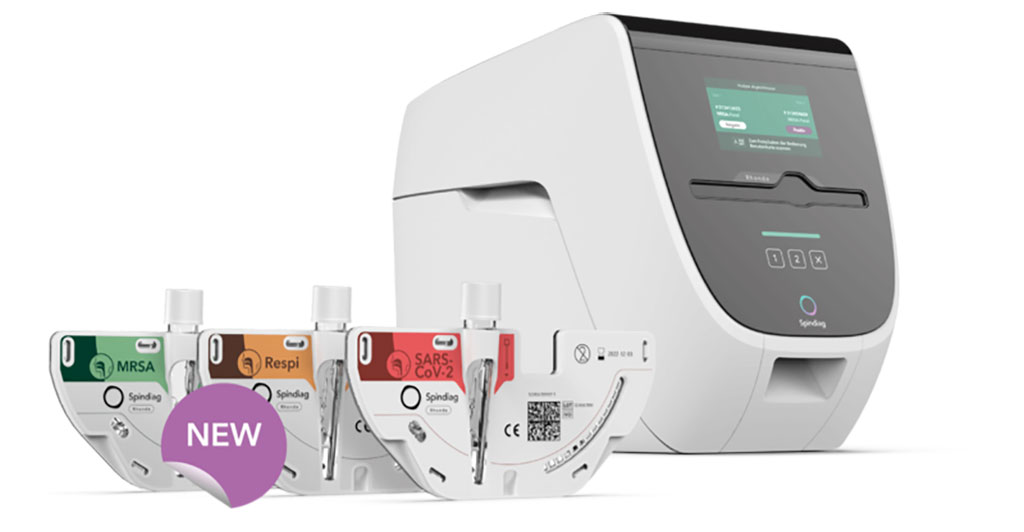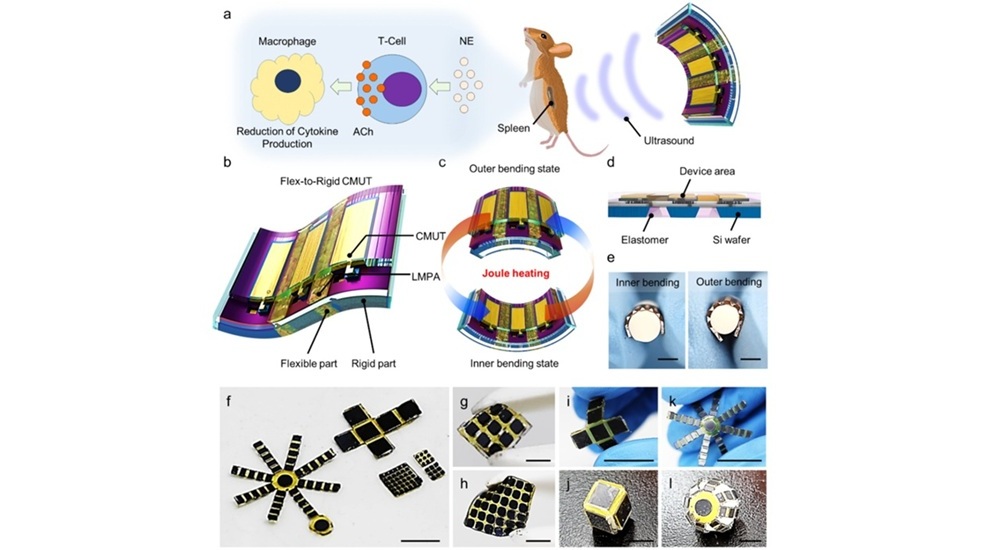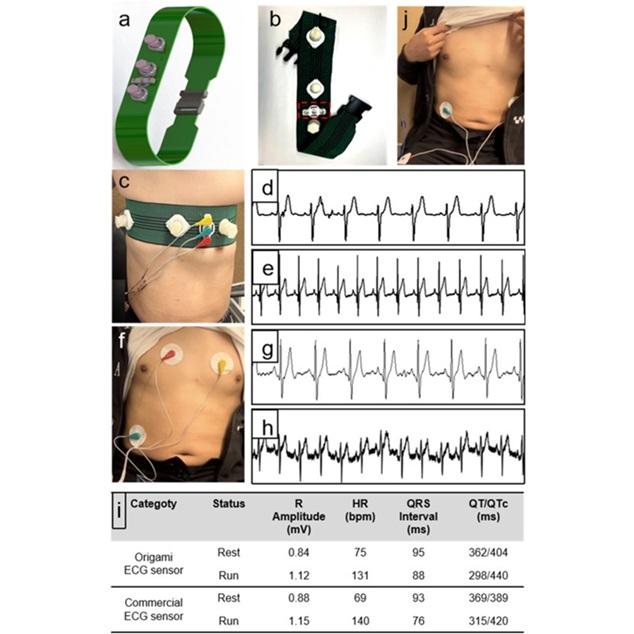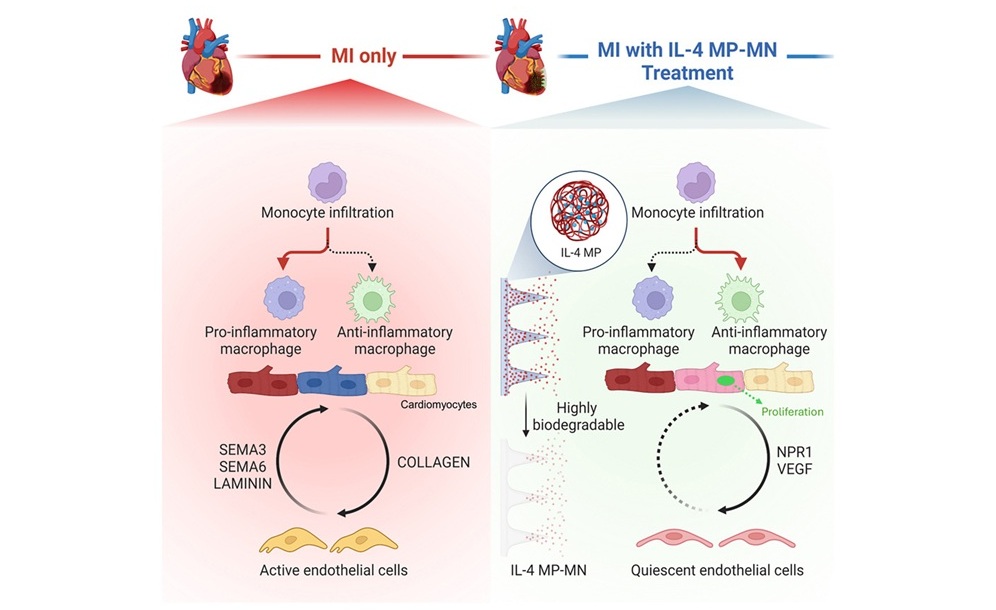Multiplex PCR System Detects Bacterial and Viral Pathogens at POC
|
By HospiMedica International staff writers Posted on 11 Jul 2023 |

Following symptom onset and hospital admission of patients with suspected infectious diseases, it can take a long time, sometimes spanning several days, for lab results to determine whether quarantine is necessary. Now, a PCR-based rapid testing system detects infectious agents, and viral and bacterial pathogens within less than an hour and provides results right at the patient admission, allowing healthcare professionals to decide on the spot to isolate or not.
Spindiag GmbH’s (Freiburg, Germany) Rhonda is a rapid multiplex PCR system that offers healthcare professionals a sustainable platform for reliable infection control at the point of care. Rhonda allows for the direct detection of pathogens as soon as a patient is admitted to the hospital, in a safe, simple, and efficient manner. Spindiag's proprietary microfluidic technology enables Rhonda to deliver quick, accurate, and convenient results for an array of infectious diseases. At present, Rhonda is capable of detecting a variety of respiratory pathogens such as Influenza A/B, RSV, SARS-CoV-2, and MRSA. However, the system has the capacity to identify up to 36 pathogens from a single sample and the potential to incorporate alternative Nucleic Acid Amplification (NAAT) and Immunoassay (IA) technologies. Rhonda can perform two analyses for the same pathogens in a single run.
Rhonda offers excellent sensitivity and user-friendliness, requiring minimal training for operation. It has a simple process that includes barcode scanning and the use of three touch buttons. The system also allows direct insertion of standard swab samples into the test cartridge, eliminating the need for pipetting. Rhonda provides fully automated analysis and high-quality PCR results of laboratory-grade within an hour. The results are displayed on the device and digitally transferred to the Rhonda app and the hospital's HIS/LIS IT systems. Spindiag is currently working to make the Rhonda platform even faster, aiming for a 15-minute range, and developing new applications leveraging the company's unique strength of high multiplexing capability at an excellent cost structure.
Related Links:
Spindiag GmbH
Latest Point of Care News
Channels
Critical Care
view channel
Nanogel Technology Almost 100% Effective in Destroying Drug-Resistant Bacteria Within Hours
Antibiotic resistance is one of the most serious global health threats, driven by bacteria that evade treatment and form protective biofilms that shield them from drugs. Pathogens such as Pseudomonas aeruginosa,... Read more
Wearable Ultrasound Sensor Delivers Noninvasive Treatment Without Surgery
Wearable ultrasound devices have long struggled with low acoustic power and poor structural stability, limiting their use in high-resolution imaging and therapeutic applications. Conventional flexible... Read moreSurgical Techniques
view channelNovel Endoscopy Technique Provides Access to Deep Lung Tumors
Detecting lung cancer early can save lives, but diagnosing small tumors deep in the outer regions of the lungs remains a major clinical challenge. Although CT scans frequently identify tiny suspicious... Read more
New Study Findings Could Halve Number of Stent Procedures
When a coronary artery becomes acutely blocked during a heart attack, opening it immediately is essential to prevent irreversible damage. However, many patients also have other narrowed vessels that appear... Read morePatient Care
view channel
Revolutionary Automatic IV-Line Flushing Device to Enhance Infusion Care
More than 80% of in-hospital patients receive intravenous (IV) therapy. Every dose of IV medicine delivered in a small volume (<250 mL) infusion bag should be followed by subsequent flushing to ensure... Read more
VR Training Tool Combats Contamination of Portable Medical Equipment
Healthcare-associated infections (HAIs) impact one in every 31 patients, cause nearly 100,000 deaths each year, and cost USD 28.4 billion in direct medical expenses. Notably, up to 75% of these infections... Read more
Portable Biosensor Platform to Reduce Hospital-Acquired Infections
Approximately 4 million patients in the European Union acquire healthcare-associated infections (HAIs) or nosocomial infections each year, with around 37,000 deaths directly resulting from these infections,... Read moreFirst-Of-Its-Kind Portable Germicidal Light Technology Disinfects High-Touch Clinical Surfaces in Seconds
Reducing healthcare-acquired infections (HAIs) remains a pressing issue within global healthcare systems. In the United States alone, 1.7 million patients contract HAIs annually, leading to approximately... Read moreHealth IT
view channel
EMR-Based Tool Predicts Graft Failure After Kidney Transplant
Kidney transplantation offers patients with end-stage kidney disease longer survival and better quality of life than dialysis, yet graft failure remains a major challenge. Although a successful transplant... Read more
Printable Molecule-Selective Nanoparticles Enable Mass Production of Wearable Biosensors
The future of medicine is likely to focus on the personalization of healthcare—understanding exactly what an individual requires and delivering the appropriate combination of nutrients, metabolites, and... Read moreBusiness
view channel
Philips and Masimo Partner to Advance Patient Monitoring Measurement Technologies
Royal Philips (Amsterdam, Netherlands) and Masimo (Irvine, California, USA) have renewed their multi-year strategic collaboration, combining Philips’ expertise in patient monitoring with Masimo’s noninvasive... Read more
B. Braun Acquires Digital Microsurgery Company True Digital Surgery
The high-end microsurgery market in neurosurgery, spine, and ENT is undergoing a significant transformation. Traditional analog microscopes are giving way to digital exoscopes, which provide improved visualization,... Read more
CMEF 2025 to Promote Holistic and High-Quality Development of Medical and Health Industry
The 92nd China International Medical Equipment Fair (CMEF 2025) Autumn Exhibition is scheduled to be held from September 26 to 29 at the China Import and Export Fair Complex (Canton Fair Complex) in Guangzhou.... Read more

















